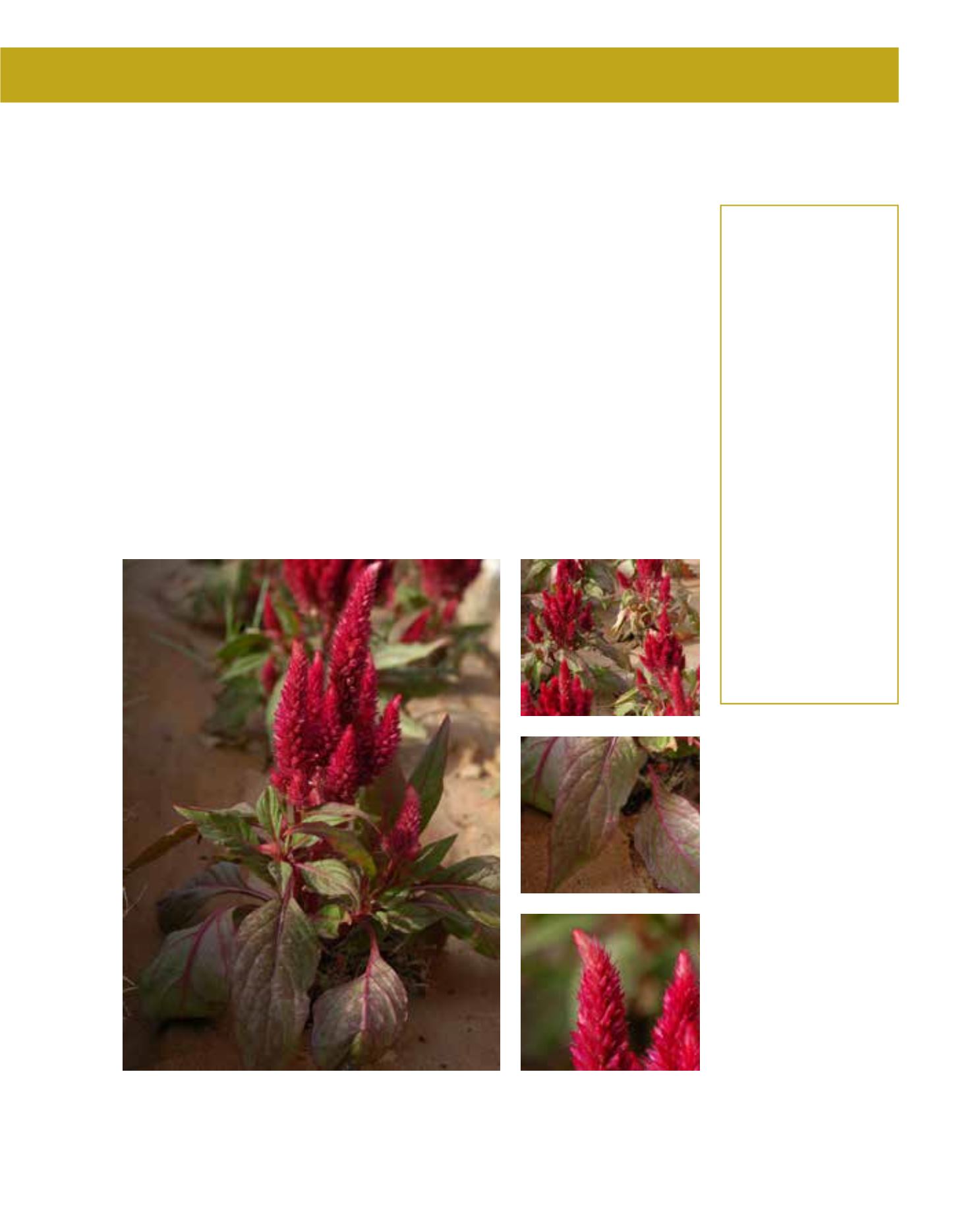

GENERAL
Origin
:
tropical
Vigour
:
fairly fast
growing
Humidity
:
semi-arid, semi-
humid
Propagation :
direct sowing,
cuttings
Maintenance :
high
CONDITIONS
Dessication :
vulnerable
Stagnant water :
vulnerable
Irrigation
:
medium
Salinity/ppm :
low (700 ppm)
Hardiness
:
+3°C
SHAPE
Type
:
annual
Height
:
0.2 m-1 m
Spread
:
0.3 m-1 m
Foliage
:
evergreen
FLOWER
Colour
:
red, orange,
yellow, magenta
Size
:
2 cm
Period
:
January - March
FRUIT
Type of fruit :
capsule
Fruit size
:
0.2 cm
Originating in southeast Asia, the Cockscomb is a brightly flowering annual with an erect, bushy
habit. Often seen in Arriyadh’s gardens, as a pot plant and also planted for winter colour, the
loose, feathery, plume-shaped flowers have a wide range of colours, including magenta, yellow
and orange. The fresh green, pointed leaves are often bronze-hued. The plant will grow to a
height of 1 metre. Propagated by seeds, preferably in the flowering site since they resent distur-
bance, they like rich well-draining soils in full sun and thrive on sandy soils. Regular irrigation
is required and the plants are not very frost-tolerant. Like all annuals planted for winter colour in
Arriyadh in October/November, their life is shortened even more by the onset of hot weather in
the spring, and plants soon become straggly. Relatively pest-free but maintenance-intensive, the
dying flowers should be removed regularly to keep plants looking good, and eventually they will
have to be removed. Apart from its use as a colourful ground cover or as a pot plant, C. argentea
has no great landscape value.
92
Celosia argentea
ssp.
plumosa,
Amaranthaceae
Plume Flower,
Cockscomb
















